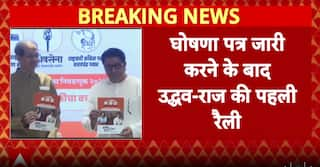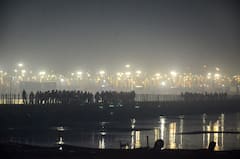UP Flood Situation: 22 Districts Reeling Under Flood, CM Yogi Adityanath Takes Stock Of Situation
UP CM Yogi Adityanath held a meeting with officials to review the relief work in the state. CM directed nodal officers be posted in all flood-hit villages and continuously monitor the situation.

New Delhi: Incessant rain over the last few days in Uttar Pradesh has increased the water levels in Yamuna, Ganga, Betwa, Sharda, Kuwano, and Chambal rivers, creating floods or flood-like situations in many districts. Currently, 22 districts of Uttar Pradesh are impacted by the floods and the relief work is underway.
Uttar Pradesh Chief Minister Yogi Adityanath held a meeting with officials to review the relief work in the state. PTI reports UP Chief Minister directed nodal officers be posted in all flood-hit villages and continuously monitor the situation.
Chief Minister Yogi Adityanath said relief material should be distributed immediately to the affected people and a boat should be stationed in each affected village. Besides, an adequate number of flood posts should be set up and helpline numbers issued to the people, he added.
Meanwhile, on Tuesday Yogi Adityanath conducted an aerial survey of the flood-hit areas of Hamirpur and Jalaun districts.
In Hamirpur, after the aerial survey, the chief minister asked officials of the irrigation department to come up with a permanent solution to the problem of floods in Hamirpur. 90 villages in Hamirpur district have been currently affected by floods.
UP Chief Minister said the main reason for floods in Hamirpur district is the release of water in the Yamuna river from Kota Dam in Rajasthan and in the Betwa river from the Matatila Dam.
Adityanath also took stock of the flood situation in Jalaun and directed officials to expedite the relief and rescue operations. He also distributed food items to the flood-affected people.
PTI reports a state government official in Lucknow stated that the floods have been triggered by a rise in the water level in Chambal, Betwa, and other local rivers. He attributed the rise in water levels of the river to heavy rains in adjoining states of Rajasthan and Madhya Pradesh.
Related Video
Indore Water Crisis: 15 Dead After Drinking Contaminated Water, Situation Still Critical




































